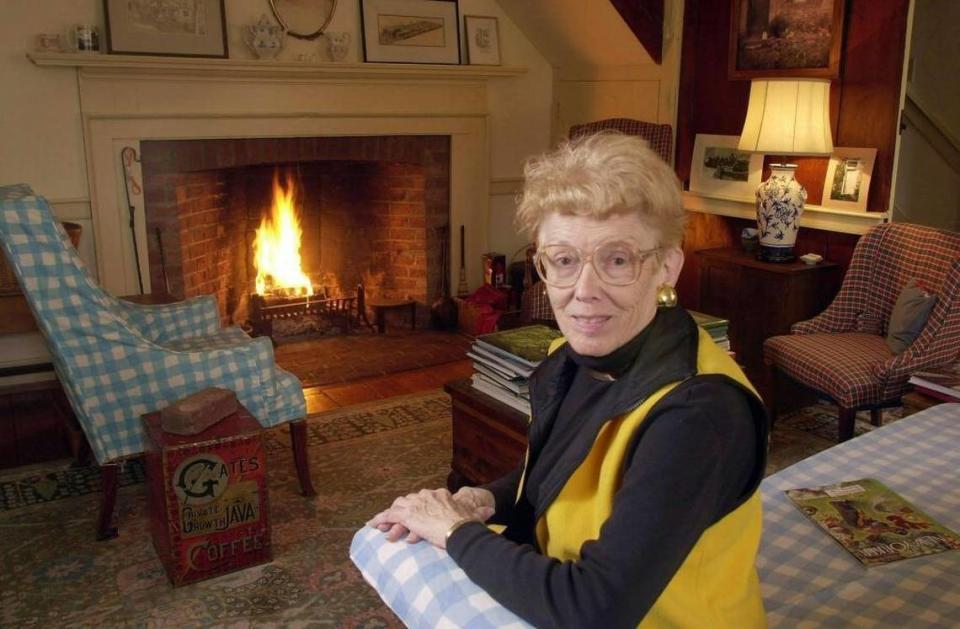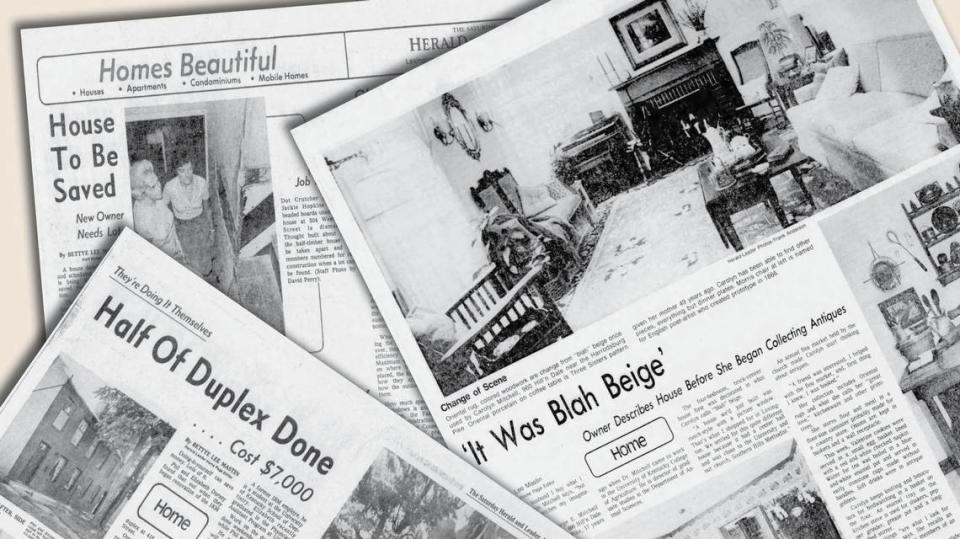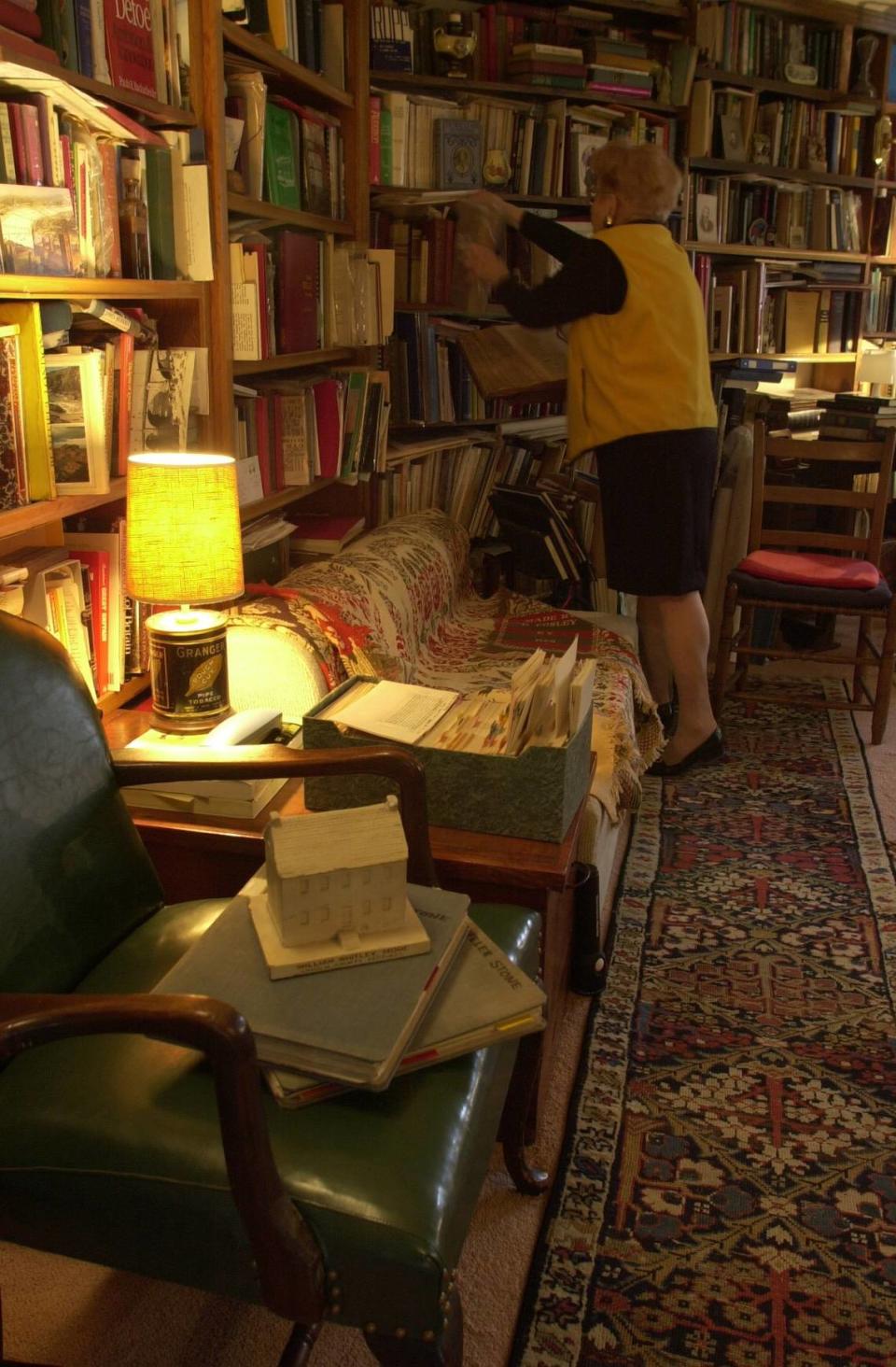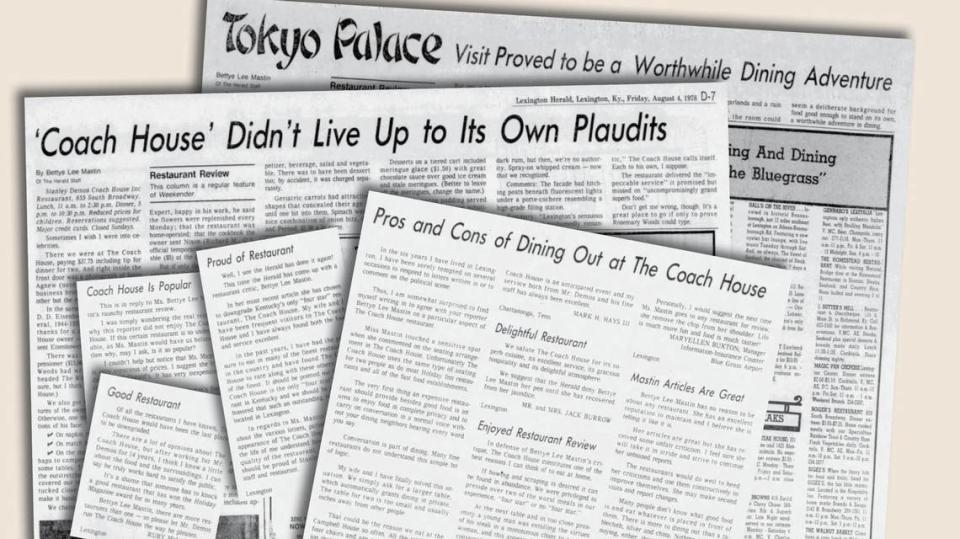Bettye Lee Mastin, journalist who championed historic preservation in Lexington, has died
Bettye Lee Mastin, whose 50-year career covering architecture for the Lexington Herald-Leader helped the city appreciate and preserve its history, died May 8. She was 97.
Mastin began working as a proofreader for the Lexington Herald in 1944, while she was a student at the University of Kentucky. After graduating with honors, she joined the newspaper full-time in 1950, writing about Central Kentucky homes until her retirement in 2000.
“She was one of the first women reporters at the paper,” said Tom Eblen, former Herald-Leader managing editor and columnist. “She was a real pioneer when newspapers were a real male-dominated world.”
Mastin said in a 1980 oral history interview that she “became interested in old things and old buildings as a child” because of the influence of her parents and her uncle.
“The Herald-Leader started sending me all over the country to see areas ... where communities had used preservation,” she said. “...This was a very unique resource that Lexington had and ought to be put to use.”
Over the decades of writing for the Herald-Leader’s Home page, Mastin came to be known as “one of the authorities on antebellum architecture in Central Kentucky,” Eblen said.
Mastin was known for her carefully-researched home features, and over the years, she penned more than 2,000 of them, Eblen wrote in a 2017 column.
“She played a really big role, I think, in making Central Kentuckians appreciate the historic architecture,” he said in an interview after Mastin’s passing. “Telling Kentuckians about their history and helping them appreciate the built environment that had been left to them.”
Mastin was also a champion of preservation in her private life.
She served on the board of the Blue Grass Trust for Historic Preservation and taught university classes.
She was a close friend of architectural historian Clay Lancaster, who she persuaded to buy the Moses Jones House in Salvisa. The property is now managed by the Warwick Foundation, whose board Mastin served on.


In 2017, Mastin was inducted into the Kentucky Journalism Hall of Fame.
The late Bill Hanna, who also joined the paper in 1950, wrote in a 2017 letter to the editor that “she could make the most mundane house come across a page as a real home.”
“Her penchant for accuracy is legend,” Hanna wrote. “A colleague once remarked that ‘if Bettye Lee wrote that Christopher Columbus sailed up the Kentucky River and discovered Nicholasville, I would take it for gospel.’”
Eblen seconded that sentiment.
“She was an exceptional researcher,” he said. “Bettye Lee wanted to make sure that all the facts were accurate. She knew a good story, but she wanted to make sure it was true.”

Mastin also was a meticulous record-keeper.
“She had a file on every house,” Eblen said.
In a 2001 article on her retirement, she told reporter Andy Mead she hadn’t planned to retire, but when the paper offered a buyout, she started thinking: “If I died tomorrow, all my files would be lost.”
When she decided to take the advice of her attorney and accept the buyout, Mastin had 40 boxes trucked away from the old Herald-Leader Building on Midland Avenue.
Her papers — 62 cubic feet of them — now are held in the Special Collections department at the University of Kentucky.
Mastin was unafraid to take a bold stance, even when her opinion might not have been the most popular.
For example, her 1978 review of one of Lexington’s fanciest restaurants at the time, The Coach House, made reference to “geriatric carrots” and an exterior “resembling a high-grade filling station.”
The letters to the editor in response to the review continued for weeks afterward.

After her retirement, it was clear that Mastin continued to care deeply about the newspaper.
Eblen said he’d often come in to the office in the mornings to find a voicemail from her, pointing out an error in that day’s paper.
Mastin’s roots in Central Kentucky went back generations.
Her 1979 book, “Lexington 1779: Pioneer Kentucky as Described by Early Settlers,” included the testimony of her great-great-great-great-great-grandmother, Joice Falconer.
She was born in Midway and grew up with five sisters, according to an obituary at Hager & Cundiff Funeral Home.
Her family plans to scatter her ashes at Indian Falls in Jessamine County, according to her obituary.


